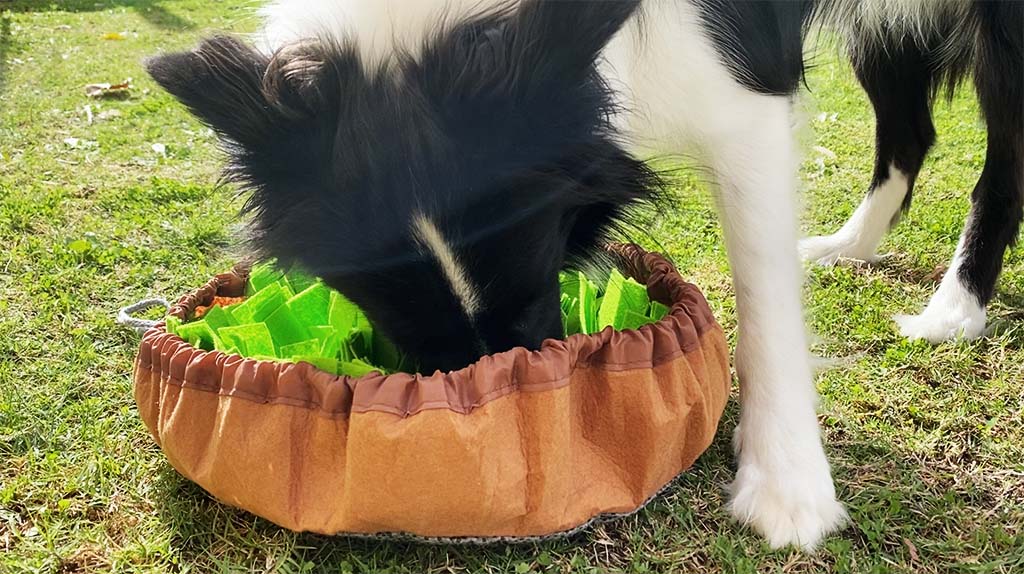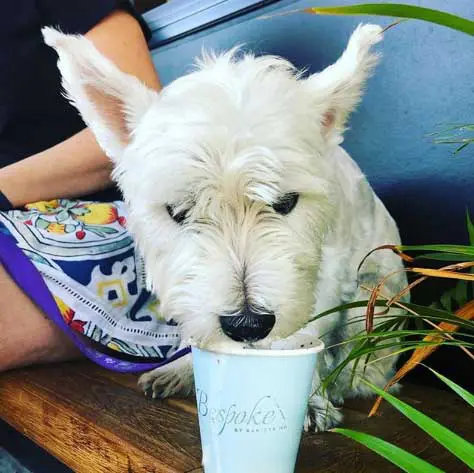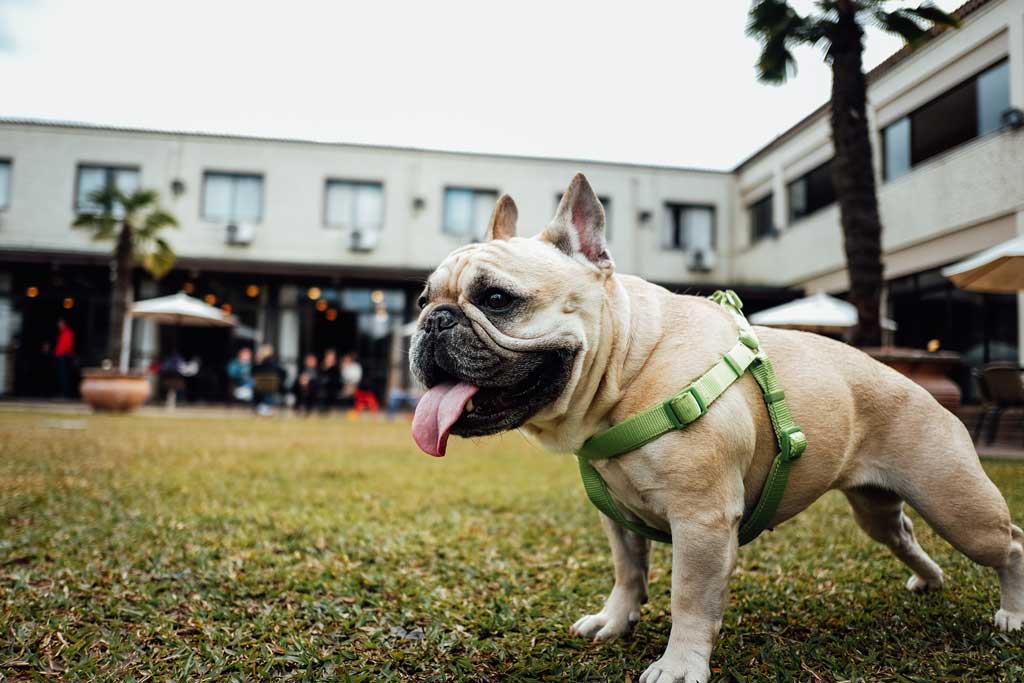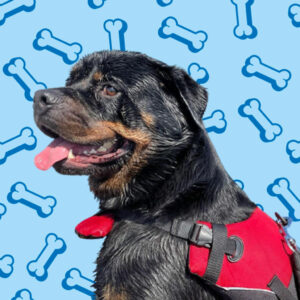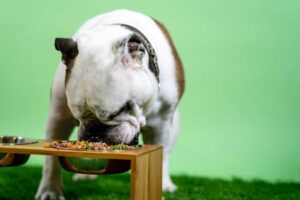Disclosure: Dogs of Australia is reader-supported. When you buy through links on our site, we sometimes earn an affiliate commission at no added cost to you. Learn more
Getting a puppy is an exciting time, but bringing a new dog home is no joke. Especially if it’s your first dog, there’ll be a lot of preparations that go into it.
Whether you expect it or not, your new furry mate will likely turn your household upside down for a little while.
We put together this handy puppy checklist for everything you may need for a new puppy, to help you prepare for the big day.
Table of Contents
ToggleNew Puppy Checklist
Dog Training Book
A good dog training book should be #1 on every new puppy checklist.
The internet is full of free advice about dogs, but it won’t ever be able to replace the structure and in-depth knowledge you’ll obtain from reading a book from start to finish. Be aware that dog training is an unregulated industry, so it’s essential to learn from reputable resources, both online and offline.
A great first read if you’re getting a new puppy is “Dog Training Revolution” from Zak George. If you can, support your local bookshop, and if you can’t, you can order it online for about $22 from Book Depository. Zak George has hundreds of YouTube videos as well, so altogether a great resource for mixing up different learning styles and to keep things interesting.
Dog Bowls
Puppies need to eat, and they need a durable bowl that’s easy to clean to hold their kibble. Make sure you get at least two bowls, one for food and one for water.
Your dog always needs to have access to water, so depending on your living circumstances, you might want to get a second water bowl (for example if you live on a big property, or if you need one for outside the house too).
Bowls should be made of food-safe material, like ceramic, stainless steel, or food-safe plastic. Ideally, you also want the bowls to be slide and flip resistant, as this can help to reduce the mess your dog will sometimes make when eating and drinking.

Our favourite budget-friendly dog bowls. Stainless steel, simple design and slide resistant.
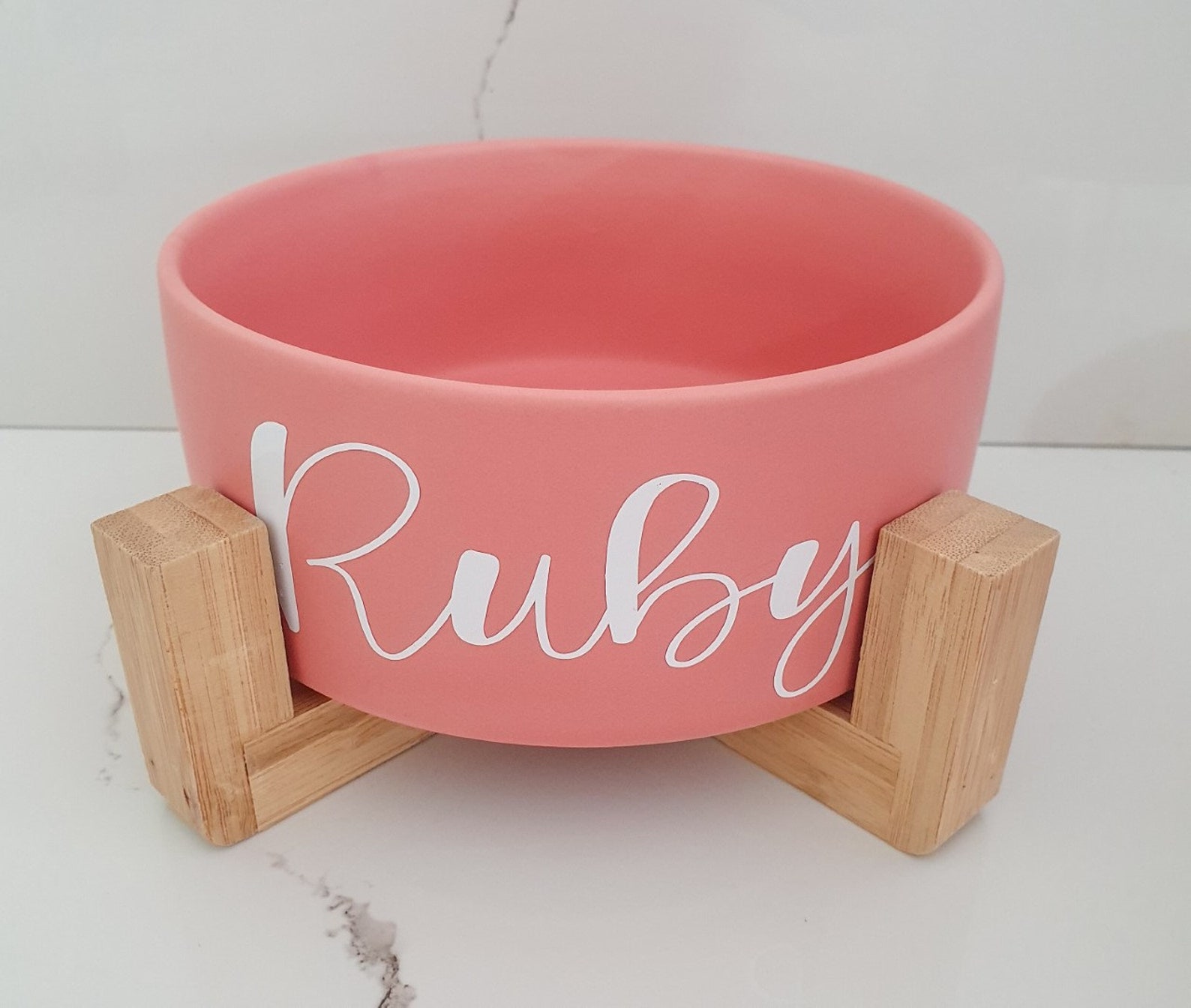
We found this pretty personalised dog bowl on Etsy, shipped from Darwin.
Dog Food
Don’t forget to ask what food your puppy is currently being fed before you bring your new dog home. It’s important to stick to the same brand initially because drastic diet changes can cause upset tummies in puppies.
To safely change your puppy’s food, you need to do it gradually. Keep feeding your dog’s regular diet at the start, and if you do want to change it, change it slowly.
For example, start with mixing the new and the old food at feeding times, but make sure you incorporate a higher percentage of the old food. Make it about 3/4 of the current food with 1/4 of the new food.
Do that for about three days, then make it 50/50 for another three days. After that, give your puppy 3/4 of the new food and 1/4 of the old food.
Dog Treats & Treat Bag
Dog training starts on the day you bring your new dog home, so make sure you have some healthy treats at hand straight away.
If you don’t want loose treats floating around in your pockets all the time, consider getting a treat bag. They come in many different types, from super fashionable to super practical. You can also use an old fanny pack if you have one.

Silicone treat bags are a great choice when you’re using wet treats, such as cooked chicken.

This affordable treat training pouch has hundreds of great reviews.
Dog Collars
While your puppy won’t be able to explore the outside world until they’ve had all their vaccinations, those first weeks at home are a fantastic opportunity to familiarise them with their collar and lead.
When it comes to collars, you’ll find that there are many different ones available. From practical to fashionable and from super cheap to super expensive. That aside, most importantly a dog collar should always be comfortable and secure.
Any collar your dog wears should be light-weight and wide enough to cover two neck vertebrates. Depending on your dog, a good quality safety lock is often important too. Lastly, it’s a good idea to get a collar that allows you to adjust the size as your puppy will grow bigger!
Getting your puppy used to their collar
When it’s time to put the collar on, turn it into a positive experience for your puppy with a lot of praise and treats every time your puppy lets you put it on without making a fuss. The last thing you want is for your dog to associate their collar as something negative.
You could put it on just before you feed your dog or you could do it as part of playtime so that your puppy quickly forgets about it. Over time, slowly increase the periods you leave it on.
Lastly, don’t forget to make sure that the dog collar is a good fit; it should neither be too tight nor too loose. As a rule of thumb, you want to be able to slide two fingers comfortably under the collar. Puppies grow quickly, so don’t forget to check the fit at least once a week.
Dog Name Tag
It’s also a good idea to get a Dog Name Tag for the collar, with your dog’s name and your personal information on it in case your pup wanders off.
While your dog should be microchipped with updated details at all times, having a dog name tag on their collar will make it much quicker and easier to bring your dog back home if needed.
Dog Harness
You won’t need a harness straight away, but they can be a helpful training tool, and you will likely need one when you start going to puppy school.
Many puppies tend to pull a lot on their leash when you’re taking them for a walk, which can cause them to choke and cough. A harness can help with that.
Although keep in mind that you want to have a think about when you’ll start your leash-manners training too.
In terms of harnesses, look for one with a lightly padded mesh, so that it won’t rub against your dog’s skin.
Many dog parents like to buy front- and back-attaching harnesses as they redistribute your dog’s weight to help prevent pulling. But they don’t work for everyone and aren’t a substitute for training.
We wrote an in-depth article about everything you should know about Dog Harnesses here: All You Need To Know About Buying A Dog Harness

The Perfect Fit Harness is often recommended by vets and dog trainers.

A great, practical alternative to the Perfect Fit Harness.
Dog Leash
At least one dog leash should be on every puppy checklist.
Every dog needs a good, sturdy leash for their walkies, so invest in a high quality one with a size appropriate clip that’s not too heavy.
For example, thick leashes with large clips are often too heavy for small dogs, and thin leashes with small clips are unsuitable for large dogs as they may break.
While your puppy isn’t leash-trained, the length of the leash is super important. You don’t want it to be too long as this can be dangerous for your dog. You also don’t want it to be too short though, because this will set your puppy up to pull.
The leash should be long enough to allow your pup some room to explore, while also staying within the limits of the lead length to keep your puppy safe. In our experience, that’s about 2 metres.
Steer clear from automatic or bungee leads for the time being, as the risk isn’t worth it for dogs who aren’t leash-trained. They not only encourage pulling, but they can also seriously hurt your dog.
Think about it this way – what if your dog takes off and reaches the end of the leash while running full speed? It’s no good for their neck. Often, the automatic leashes are quite thin too, which can hurt both you and your dog if they get wrapped around your legs.
Road Safety – Dog Seatbelt
This one should be a no-brainer because you want to ensure that your dog is safely secured when they come along on a drive with you. Your safety options are a dog seatbelt buckle, a car harness or a crate or box for your car.

The Kurgo Harness we mentioned above comes with a dog seat belt tether.
Dog Bed
As part of their growth process, your puppy will sleep a lot. One minute your puppy may be a mini-tornado, and the next minute, they could fall asleep halfway through their lunch.
Sleeping is an essential part of your dog’s development. When puppies are awake, they burn a lot of energy, so it’s important to give them the time and space to sleep when they need to.
Every dog needs somewhere soft to lay their head, and a lot of the time, their bed becomes their safe haven.
Keep in mind that depending on the breed you’re getting, there’s a risk that your puppy will outgrow their bed quickly. Puppies also go through a chewing period when they’re teething, so don’t spend more money than you’re comfortable losing on your dog’s first bed.
Depending on your living circumstances, you might also want to consider getting two or more beds for your dog. It’s often good for your dog to have a dedicated space in every room that they will be spending lots of time in. That way they always know where to go and have a safe space to retreat to.
There are many different types of dog beds you can choose from, such as dog pillows, wooden dog beds, or rattan dog beds.
If you want your dog to have easy access to your furniture, have a look at dog stairs and ramps.

This calming dog bed has lots of great reviews and is available in many different colours

This handmade cave dog bed ships from Cairns
Dog Crate
Crates can be a controversial topic, and it’s totally up to you to educate yourself and decide to what extent you’ll be using one.
In having said that, there will be times where your dog needs to be in a crate, for example when they need to go to the vet, or if they ever need to travel on a plane. So, it’s generally a good idea to familiarise them with a crate while they’re still young.
By teaching your dog that it’s okay to be in a crate sometimes, it’ll be less stressful for them when they need to stay in one for one reason or another. Make sure that the crate is big enough for your dog, which means that your dog needs to be able to stretch and stand in the crate.
If you don’t like the way they look, check out beautifully designed dog crate covers, or custom-made wooden dog crates that match your furniture.
Dog Pen (Playpen)
The first couple of months with your puppy can often be pretty full-on. They’re not fully potty trained and tend to chew on everything they come across. For both your sanity and your pup’s safety, getting a playpen can be a great idea.
They’re not cheap and you might not be using them for a long time, so you could have a look on Gumtree for a second-hand one.
They typically look a bit like a cage though, so if that bothers you and you’d rather have something pretty in your living room, you can get one similar to the one pictured below on Amazon for about $100.
If you’re planning to set up a dedicated outdoor dog run, it’s important to keep it protected from the sun at all times.

This budget-friendly dog pen is compact, super light and easy to clean. See on Amazon.

Durable & flexible – these play pens can easily be extended and are a common choice.
Dog Toys
Every puppy checklist needs a few different dog toys.
We, humans, value fun enormously, and dogs are undeniably a playful species as well. When you first bring home your new dog, there’s a good chance that you’ll be tempted to buy every single dog toy you come across.
In response to that, your pup will most likely pick two or three favourites and completely ignore the rest. So, to keep your frustration to a minimum, don’t give your puppy access to more than two or three toys at a time.
This doesn’t mean that you can’t have more. It’s actually a good idea to have many different types of toys, just as long as you rotate them instead of giving them to your puppy all at once.
Puppy Chew Toys
Puppies explore the world using their mouths, and this can involve unwanted chewing on your belongings. It’s important to give them access to chew toys that are recommended for their age.
You could choose a durable rope toy to start with, and teach your pup how to play tug-of-war, as an alternative to chewing on your favourite shoes or furniture.
Or just get a box full of different toys, so that you can get an idea of what your puppy likes. For example this one from Zenify, which includes 12 items and sells for $33 on Amazon.
Fluffy Toys
Fluffy toys are good to help avoid boredom. Some dogs can tear them apart in under an hour, so don’t spend too much money on them before you know how long they’ll last with your pup.
Environmental Enrichment Toys
These are great for mental stimulation, as their key concept is to make your dogs environment more interesting. Start with a Kong or Snuffle Mat. You can learn more about Enrichment Feeding here: A Guide to Enrichment Feeding.
Grooming Brush
While your puppy might not be losing much fur straight away, it’s a good idea to get them used to a brush sooner rather than later.
Brushing helps to keep your dog neat and tidy without the hassle of washing them. It also helps to keep their shedding under control. On top of that, grooming appointments can be expensive, so it’s good to start a regular brushing routine.
Many dogs can be suspicious of brushes, so it can help to start off super gently (for example with a grooming glove ) and then work your way up to more serious grooming tools if you need to.
Dog Shampoo
While there definitely will come a time when your dog needs a bath, there’s no need to over-bathe your dog. It’s best to speak to your vet about this topic, but generally speaking, it’s advised to only to bathe your dog once every 2-3 months if required.
When it’s bath time, make sure you have a gentle, dog-friendly shampoo at home, you don’t want to use human hygiene products for your pets.
Waste Bags & Waste Bag Holder
You never know when your dog decides to go potty, and there’s nothing worse than your dog doing their business in a public space when you don’t have a waste bag on you.
It’s worthwhile considering to buy them in bulk straight away, as you’ll use loads of them during the lifetime of your dog. We like earth-friendly ones, like these ones that sell on Amazon for under $40 (that’s for 750 bags).
If you don’t want waste bags floating around in your pockets, car, handbag and all sorts of other places, consider getting a waste bag holder too. Get one that can be easily attached to a leash, so you’ll always have them where you need them.
Stain Removers
We’re sorry to break the news to you, but the likelihood is that there’ll be quite a few accidents during the early days of bringing your new puppy home. Even if you get your puppy toilet trained quickly, there will still be the odd accident every now and again.
You won’t believe how much your paper towel usage will increase, so get used to buying them in bulk if you don’t already. It’s also a good idea to pick up some stain removers (see on Amazon ) and enzymatic deodorisers, to have them ready when you need them.
Your dog has a superior sense of smell, so it’s important to clean up the areas where accidents happened as good as possible to prevent your puppy from thinking that it’s okay to go potty there.
Flea and tick treatment
Please follow your vet’s recommendation for the correct flea and tick treatment.
Worming tablets
Please follow your vet’s recommendations for the correct treatment and dosage.

